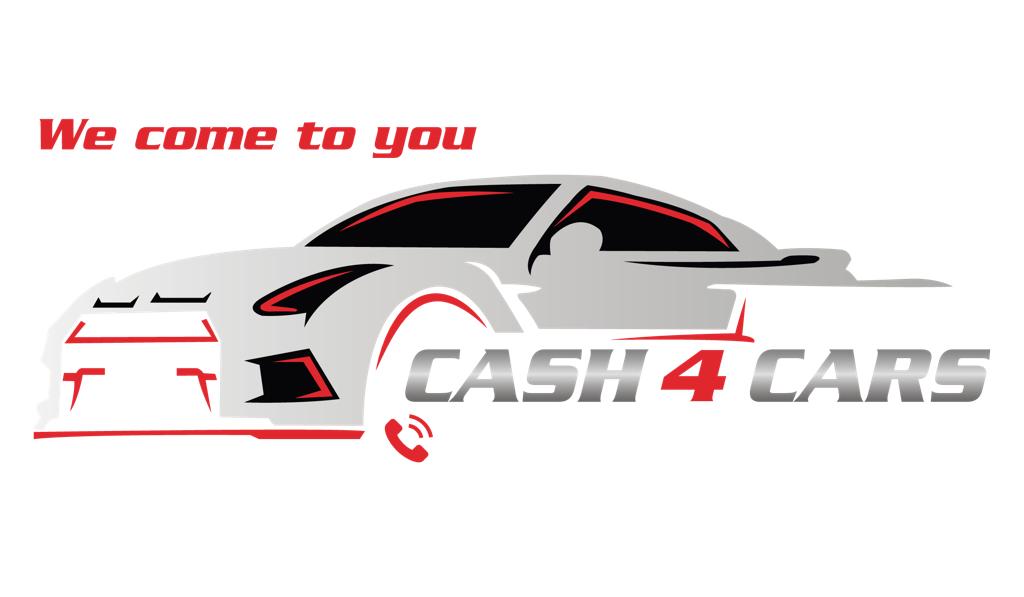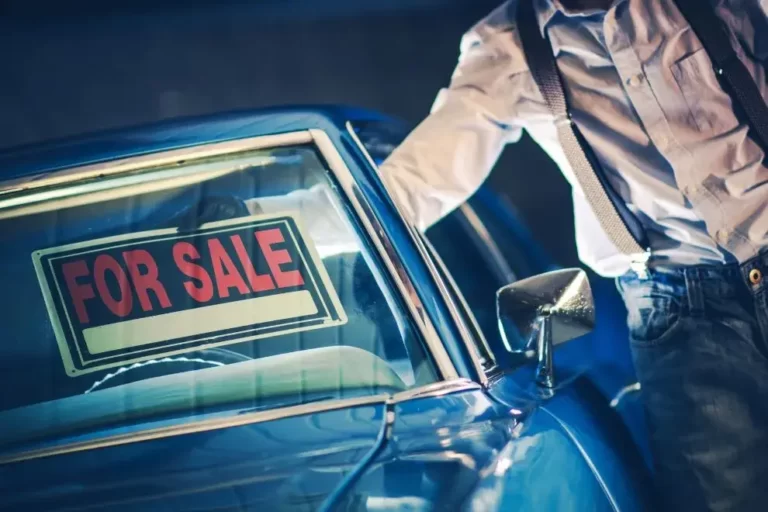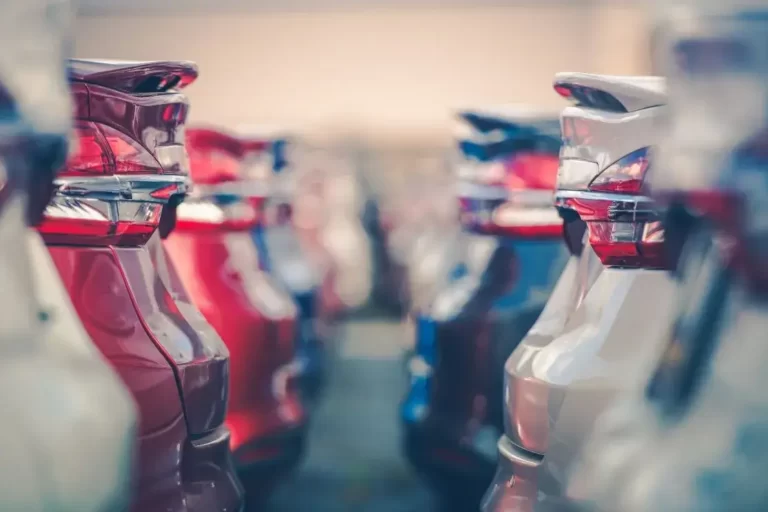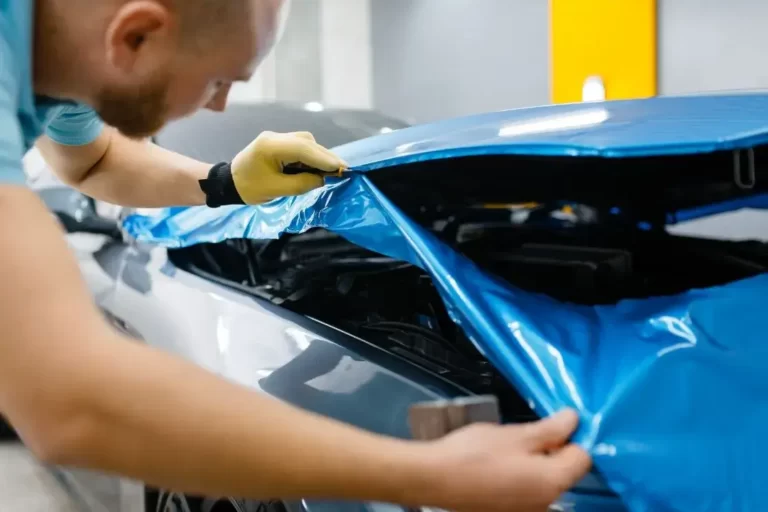Car Hit By Kangaroo While Driving: Can I Still Sell It For Cash
The Car hit by kangaroo while driving is an unfortunate event, but one that may leave the owner with many questions. One of the most common questions relates to what can be done with the damaged vehicle; namely, whether it can still be sold for cash. This article will provide insight into this situation, examining the legal and practical considerations associated with selling a car after such an incident.
The potential implications of having a kangaroo impact a vehicle are significant and require careful consideration before any action is taken. It is important to understand how insurance policies work in relation to these types of events, as well as explore other options available to owners who wish to sell their cars following this type of incident.
Furthermore, understanding the variables involved in assessing the damage caused by animals will also prove useful when considering sale options.
Facts & Figures Related to Car Hit By Kangaroos & By Other Animals In Australia
In Australia, collisions between cars and kangaroos or other animals pose a significant concern for drivers. The following facts and figures highlight the prevalence and impact of these accidents:
- Kangaroos and wallabies are involved in 90% of animal-related crashes in Australia, which account for 5% of fatal crashes overall.
- In 2019, over 13,000 animal strikes occurred on NSW roads, with 85% involving kangaroos. Similar proportions were observed in Queensland and Victoria.
- In 2018, the NRMA reported a 20% increase in kangaroo-related car accident claims, totaling 14,500.
- Kangaroo collisions are most common at night, between 5 pm and 10 pm.
- The most severe accidents happen when drivers swerve to avoid a kangaroo, leading to another major collision.
- The worst areas for kangaroo strikes in NSW include Armidale, Dubbo, Goulburn, Mudgee, and Muswellbrook. In Queensland, these areas are Goondiwindi, Middlemount, Moranbah, Roma, and St George. In Victoria, they are Greater Bendigo, the Macedon Ranges, Wellington, Whittlesea, and the Yarra Ranges.
Understanding The Dangers Of Kangaroo Collisions
Kangaroo collisions pose a significant threat to both drivers and wildlife, making it crucial for motorists to understand how best to avoid such incidents. In this guide, we will discuss the importance of determining whether it is safer to swerve or brake when faced with a kangaroo on the road, the role of headlights in increasing visibility and the likelihood of evasive action, and the potential damages that can result from these encounters.
By being informed about the risks associated with kangaroo collisions, drivers can make better decisions to protect themselves and the wildlife they share the road with.
Swerve Vs. Braking
When it comes to safety on the road, there is one particular hazard that can be often overlooked: wild animals. In Australia, kangaroos are particularly abundant and they pose a significant risk when driving at night in rural areas. Motorists must understand how best to react if they find themselves having to swerve or brake suddenly to avoid hitting a kangaroo.
The most important thing to remember is not to panic; both swerving and braking can be dangerous depending on the circumstances. Swerving should only be used as an absolute last resort, as it could cause your vehicle to lose control and crash into other objects or even worse – another motorist. Braking in such situations is usually preferable but make sure you do so smoothly and gradually in order to maintain full control of your car and give yourself time for corrective action if necessary.
Having comprehensive car insurance also provides peace of mind in case anything does happen; many policies cover damage caused by hitting an animal, including kangaroos. While no one wants to experience a collision with a kangaroo, understanding how best to manage these potential encounters reduces the risks associated with them significantly. Being prepared ahead of time helps motorists stay safe and minimise any further damage due to collisions with wildlife.
Headlight Use For Avoidance
Headlights play a vital role in avoiding kangaroo collisions, especially at dusk. By maximizing headlight use, drivers can enhance visibility, alert others to their presence, and potentially deter wildlife from the road. Modern vehicles often feature advanced lighting technology, offering superior illumination compared to traditional bulbs, which helps reduce the risk of collisions with kangaroos and other animals. However, staying alert and aware remains crucial at all times, both day and night. As headlight output diminishes over distance, adjusting speed to ensure ample time for corrective action is key to minimizing damage and promoting road safety for all.
Vehicle Damage From Collisions
Kangaroo collisions can lead to extensive and costly vehicle damage, emphasizing the need for comprehensive car insurance. Standard policies may not cover such incidents, leaving drivers vulnerable to financial losses. Damages from kangaroo collisions vary, from minor dents to broken windows or even major mechanical failure.
While it’s impossible to entirely eliminate risks associated with wildlife encounters, comprehensive car insurance can mitigate financial burdens resulting from vehicle damage. Investing in such coverage is crucial for safeguarding both drivers and their vehicles against unexpected accidents.
Steps To Take Immediately After Hitting A Roo
- After hitting a roo, it is important to ensure the safety of everyone involved, including the animal and yourself.
- Calling for help is the next step to take, whether it is contacting a tow truck, the police, or the local wildlife services.
- After ensuring safety and calling for help, it is important to check the pouch of the roo to see if there are any joeys that need to be rescued.
- Lastly, it is important to report the accident to the relevant authorities as soon as possible to ensure that the incident is properly documented.
Ensure Safety
When you hit a kangaroo while driving, your first step is to ensure your safety. As soon as the incident has occurred and it is safe to do so, check on the animal and make sure that any of your pets are kept away from the situation. It is also important for drivers to contact either the police or wildlife rescue organization in order to secure help with the injured kangaroo.
In addition to this, you should take a look at the pouch of the animal just in case there is an orphaned joey inside needing assistance. Lastly, it’s imperative that all accidents involving a kangaroo be reported immediately to the nearest police station along with filing details of your insurance policy if applicable.
By following these steps after hitting a roo, you can protect yourself as well as any potential young animals affected by such an unfortunate event.
Call For Help
In the event of hitting a kangaroo while driving, it is important to call for help immediately. It is recommended that drivers contact either their local police station or wildlife organisation as soon as possible in order to get assistance with the injured animal and any potential damage to their vehicle.
If you have an insurance policy, make sure to file details of the claim at the nearest police station or by contacting your insurer directly.
Wild Life Hotline Run By WIRES In Australia
If AN incident occurs in Australia, Then there is an Injured Wildlife Hotline service run by WIRES, it is Australia’s largest wildlife rescue organisation. And they can be contacted for guidance and further advice.
- The hotline operates 24 hours a day, 365 days a year, and provides rescue advice and assistance for over 130,000 animals annually
- The hotline number is 13 000 WIRES or 1300 094 737
- The hotline can also be accessed online by filling in the Report a Rescue form on the WIRES website
- The hotline is staffed by volunteers who are trained and experienced in wildlife rescue and care
- The hotline aims to actively rehabilitate and preserve Australian wildlife and inspire others to do the same
By following these steps, drivers are able to effectively handle such incidents and ensure both their safety and that of any young animals affected.
Dealing With Car Insurance After A Kangaroo Collision
This section offers insights on insurance coverage generally it may vary from one insurance provider to other. The claim settlement process, and how to prepare for a favorable outcome. With the comprehensive cover being the ideal choice for such incidents, understanding your policy terms and working closely with your insurer will help you navigate the aftermath of a collision with confidence.
Things to remember:
- Understand available insurance coverage
- Make a claim if necessary
- Be aware of the claim settlement process
- Prepare for the process
- Comprehensive cover likely covers kangaroo collisions
- The insurer assesses the damage and determines the settlement amount
- The insurer may not cover the entire replacement cost
- Understand policy terms and claim process for a satisfactory outcome
Claiming Comprehensive Insurance
The discussion of claiming comprehensive insurance for dealing with car insurance after a kangaroo collision is an important matter to consider. When it comes to making a claim, there are various factors that need to be taken into account. The first step should always be assessing the situation and attempting to establish control of your vehicle if this is possible.
After this has been done, you will need to assess any damage caused by hitting the roo and seek out wildlife information in order to determine whether any injured kangaroos require medical attention. It is also important to check what your specific car insurance coverage includes as different policies have varying levels of coverage when it comes to animal collisions.
Once all these steps have been completed, you can begin the process of making an insurance claim regarding the incident and look at potential avenues for compensation or repair costs resulting from the accident. In many cases, insurers may opt for cash settlement rather than repairing the damaged vehicle but ultimately this decision lies in their hands.
Understanding Insurance Coverage
When it comes to dealing with car insurance after a kangaroo collision, it is important for drivers to understand their auto insurance coverage and what damages are covered. Depending on the policy, different levels of protection can be provided against damage caused by hitting roos or other animals in traffic.
It is vital that drivers consider whether they have sufficient coverage as well as any additional costs such as higher premiums that may need to be paid out-of-pocket if their current plan does not provide this level of protection.
Furthermore, some policies will also require drivers to pay an excess fee before being able to claim compensation for the incident. As a result, understanding your insurance coverage thoroughly prior to making a claim is essential in order to ensure that you receive appropriate reimbursement for any damage sustained during the accident.
Claim Settlement Process
Once a driver has understood their car insurance coverage and any additional costs that may need to be paid out-of-pocket, the next step towards resolving damage caused by hitting a roo is making a claim. It is important for drivers to remember that kangaroos are most active during dawn and dusk hours, so extra caution needs to be taken when driving at these times of the day.
When filing a claim with an auto insurer, it can help to have as much information about the incident available and enlist the assistance of a rescue organisation or similar entity if needed. Insurance claims involving collisions with animals may take longer than usual due to the complexity of assessing the damages incurred, but following all proper procedures will ensure that this process runs more smoothly.
There are also some insurers who offer specialised packages tailored towards covering incidents such as animal collisions which could prove beneficial in terms of making sure you receive appropriate compensation for your car accident.
Assessing The Damage And Repairing Your Car After Hitting A Kangaroo
After a car-kangaroo collision, promptly assessing vehicle damage is vital to determine necessary repairs and associated costs. Take precautionary measures, like moving the car off the road and arranging for a tow truck to transport it to a mechanic.
The mechanic will then evaluate the damage and provide a repair estimate. Upon completion, thoroughly inspect the car to ensure satisfactory repairs and verify that it’s safe for driving, making your journey back on the road a smooth and confident one.
Now let’s discuss these steps individually.
Assessing Damage
The car you have been driving for so many years has suffered a terrible fate. It was involved in an accident involving a kangaroo, and now the question is whether or not it can still be used to make a car. The first step after assessing any damage caused by hitting something with your vehicle is to contact a rescue and education service that specializes in helping injured animals who have been hit on the road.
If there is still life left in the animal they will take them to the nearest vet and if necessary, find out if there’s a joey attached.
If your car has sustained serious damage, then contacting professionals should always be done as soon as possible; either through a tow truck or mechanic who can accurately assess the extent of the damage caused by hitting something with your vehicle.
This assessment should cover both repair costs versus the value of your car, as well as look at options when repairs may no longer be worth doing due to the cost or age of the auto body parts being replaced.
These assessments are crucial before making decisions about how best to move forward from such accidents; allowing those affected enough time to weigh up all potential solutions without feeling pressured into taking one particular course of action over another.
Repair Costs
When assessing the damage and repairing a car after hitting a kangaroo, it is important to consider repair costs. The cost of repairs will vary depending on the severity of damage done to the vehicle as well as any parts that need to be replaced. In some instances, an insurance company may cover these costs if the driver was not at fault for colliding with an animal.
It is also recommended to call the relevant authorities or use hazard lights when approaching an injured animal in order to check the surrounding area for potential hazards. If there is no danger present, drivers should approach with caution before attempting to move or handle the animal themselves.
Taking these steps can help reduce repair costs by preventing further accidents from occurring due to other cars swerving around a stranded animal on the road.
Selling Your Car After Hitting A Roo: What Buyers Need To Know
When selling a car that has been damaged by a kangaroo, it is important to understand your disclosure requirements. This includes informing potential buyers of the damage and any repairs that were made. Negotiations with buyers should be informed by market values and the cost of repairs.
Maximizing value may involve offering additional services such as mechanical inspections, further repairs, or a warranty. It is essential to be aware of all local laws and regulations when selling a car after a kangaroo collision. A thorough understanding of the buyer’s needs and expectations will also help to ensure a successful sale.
Lastly, having the necessary paperwork, such as the car’s title, service records, and receipts, will help to create an organized and efficient sale.
Disclosure Requirements
When selling a car after suffering damage from hitting a kangaroo, it is important to disclose the incident to potential buyers. The seller must check its pouch for any joeys, and notify wildlife rescue organisations or police if necessary. Depending on the severity of the accident, there may be visible evidence such as dents or scratches that could make potential buyers wary.
If so, they should attempt to move the animal in question away from the danger of being hit by another vehicle before handling it as little as possible. As with any used car purchase, accurate disclosure can help ensure an informed decision is made and will protect both buyer and seller in case of further legal action down the line.
Buyers should always assess the risk of hitting wild animals when considering purchasing a car near areas where they are known to inhabit. Ultimately, disclosing all relevant information upfront can help ensure a pleasant transaction with minimal conflict while avoiding potential issues related to liability.
Negotiating With Buyers
When negotiating with buyers about the car’s history after a collision involving a kangaroo, it is important, to be honest, and upfront. As wild animals can often cause serious damage during collisions, it is essential that sellers inform potential buyers of any similar incidents they may have experienced in their vehicles.
It should also be noted that when approaching an animal such as a kangaroo, tow trucks are recommended for removal purposes to keep both the buyer and seller safe. Buyers should also be aware that these animals tend to be active at dawn and dusk so extra caution should be taken during this time period if traveling near areas where they inhabit.
Collisions with wildlife can cost up to thousands of dollars which could affect the overall value of the car so while there needs to be open communication between both parties involved, sellers must remember to remain firm on their asking price.
Ultimately, understanding the risks associated with driving through wildlife habitats will help ensure safe travels for all drivers regardless of whether or not they own a vehicle damaged by a kangaroo.
Maximizing Value
When selling a car that has been involved in an accident involving a kangaroo, it is important to maximize its value. The first step should be to ensure the safety of everyone at the scene and secure any necessary evidence before beginning repairs. It is also recommended to keep the vehicle warm as this can help reduce further damage from occurring.
Buyers must always bear in mind that making repairs on vehicles damaged by kangaroos may cost more than expected. For general advice, sellers should consider contacting their insurance company for assistance or visiting an automotive repair shop for an estimate of damages prior to listing their vehicle.
Ultimately, by understanding the risks associated with driving through wildlife habitats and proper preparation when dealing with potential buyers, sellers can increase their chances of getting maximum value out of their car after a kangaroo collision.
Conclusion
Kangaroo collisions can be a dangerous and damaging experience for any car owner. Despite the severity of such an accident, it is possible to repair your vehicle and even sell it afterward with some knowledge and preparation. Buyers should understand the potential risks involved when purchasing a car that has been in contact with a kangaroo, so they can make an informed decision on whether or not to proceed with the purchase. Ultimately, having the right information at hand will help you navigate through this difficult situation and ‘get back on track’ afterward.
Frequently Asked Question
Q: What should I do if I hit a kangaroo while driving?
A: If you hit an animal while driving, it is important to ensure your safety and that of other road users. You should call 000, slow down and move away from the accident site. If it is safe to stop, you can check on the animal and contact a local wildlife rescue organization, or call 1300 596 457 in rural areas where there is no mobile phone reception.
Q: How can I avoid hitting a kangaroo with my car?
A: Kangaroos are particularly active at dawn and dusk, so be especially vigilant during those times. If you see one ahead of you on the road, slow down as much as possible and approach cautiously. You may need to stop completely before it moves out of the way or jumps over your vehicle.
Q: Can my car insurance cover damage cause by hitting a kangaroo?
A: Generally speaking, yes most car insurance policies cover damage to a vehicle caused by a collision with an animal such as a kangaroo. However, it’s important to check the details of your policy carefully before making an insurance claim.
Q: Is it safe to approach a kangaroo after hitting it with my car?
A: The safety of any situation involving wildlife must always come first. As strong and fast animals, kangaroos can pose a potential danger if approached too quickly or carelessly. If possible, keep any pets away from the scene to avoid stressing out the animal further. Approach with caution and if needed gently remove it from the roadside and take it to the nearest vet for assessment.
Q: What if I find a joey attached when I approach a kangaroo after hitting it with my car?
A: If you find that there is a joey attached when approaching the injured animal at an accident scene, then call either your local wildlife rescue organisation or your car insurer for assistance. It may be necessary for them to provide advice on how best to handle the situation.
Q: Can I still sell my car if it has been hit by traffic involving a kangaroo?
A: Depending on the extent of damage caused by the collision with the animal, you may still be able to sell your vehicle for cash even though there has been an accident involving a roo. Talk to potential buyers about what happened so they are aware of any issues before they purchase.
Q: Should I try and make my own repairs if my car has been hit by traffic involving a kangaroo?
A: It’s important that all repairs made following an accident involving an animal are done professionally in order for them to be covered under your car insurance policy. Contacting professionals who are experienced in dealing with this type of damage will help ensure that all repair work is completed safely.
Q: Is there anything else I should do after hitting a kangaroo with my car?
A: After hitting an animal with your vehicle such as in cases of collision with a kangaroo, make sure you report this incident immediately. Keep records of any expenses incurred related to repairing damage caused by this incident as these costs may be reimbursed through insurance claims.
Q: What should I do if I am traveling fast as a Kangaroo cross?
A: When you’re driving along roads in rural areas where encounters with animals like Kangaroos may occur, always remain vigilant. Slow down immediately when spotting one, but also use caution when approaching – animals can sometimes be unpredictable. Try not to panic, but also don’t attempt any risky maneuvers which could put yourself or others at risk.
Q: How can I avoid stressing out an Animal after Hitting one?
A: Make sure that you keep any pets away from the scene, particularly when trying to remove and transport injured animals. Keeping them warm is also vital, so try wrapping them up in blankets or clothing. Take them directly (or arrange transport) straight away for treatment at their nearest vet clinic.







